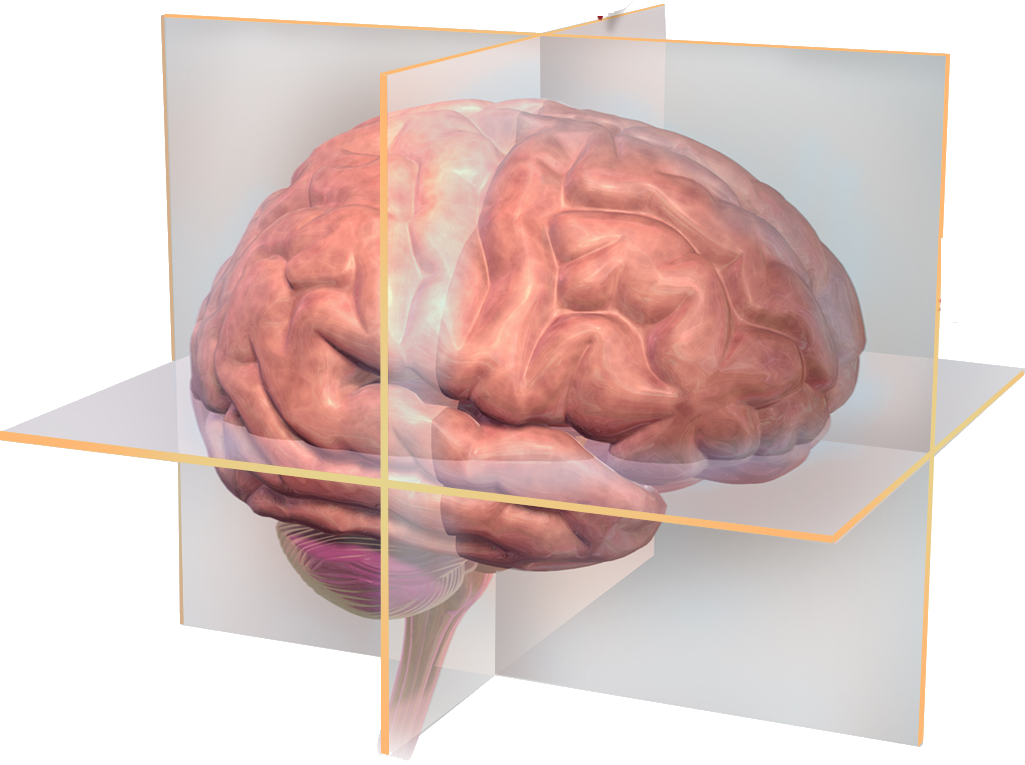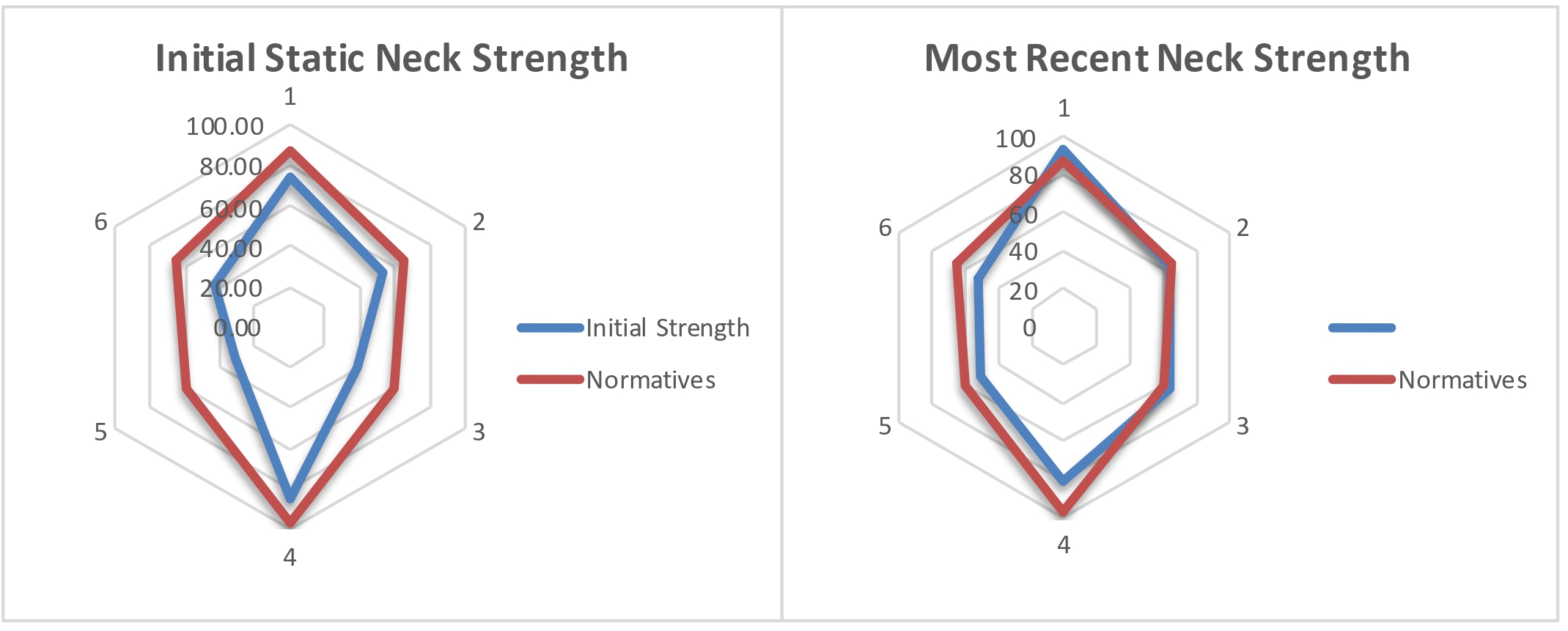Concussion Prevention Through Neck Strengthening: The Importance of a Multi-Planar Approach

Today, concussion prevention stands at the forefront of sports science, primarily due to the devastating effects of concussion injuries on young athletes and the concerns surrounding their long-term brain health. One proactive and increasingly recognized approach to minimize the risks of concussions is targeted neck training. As we dive into the principles of neck training for concussion risk mitigation in this blog series, the first principle is the significance of adopting a full multi-planar approach to neck strengthening.
The Multi-Planar Paradigm in Neck Training
Unlike several other body parts, the neck isn’t confined to the movement of the head in a singular plane. Be it a casual upward glance over your right shoulder or peering down towards your left pocket, our neck facilitates head movement across all three planes: frontal, sagittal, and transverse. In the sagittal plane (flexion/extension) it provides up to 135 degrees, in the frontal plane (side flexion) 90 degrees and in the transverse plane (rotation) 160 degrees. Not only can our neck provide basic up-down, side-to-side, or rotational gestures, but it can also combine these motions together making it responsible for an incredible amount of mobility! The Spiderman fans out there will know that Uncle Ben has taught us that with great strength comes great responsibility, but in this case, great responsibility requires great strength. This is because enhanced mobility often (if not always) compromises stability, making highly mobile regions more susceptible to injuries. Consider the brain within our skull: it’s designed to be remarkably stable – a necessary attribute for such a critical organ. But to interact with our environment, this stable entity must be perched atop a flexible system – our neck. Think of your cell phone charger. The plug itself, akin to our brain, is firm and robust, whereas the cord, mirroring the upper vertebrae of our neck, is highly flexible. If you have your charger long enough, the point where the rigid plug meets the malleable cord inevitably starts to break down. Over time, this transition zone – the juncture between stability (our skull) and mobility (our neck) – is where injuries are more likely to occur, just as a charger tends to fray at this junction. It is this multi-planar transition zone that must be specifically strengthened in all planes of possible motion.
The Advantage of Multi-Planar Neck Strengthening in Warding off Concussions: Traditional Neck Training Nuances
Historically, neck strengthening routines have been quite linear. The common methodology involves pushing the head against resistance in one single plane of motion – repeatedly. This is predominantly flexion/extension movements, with side-flexion making rare appearances, and rotation movements nearly non-existent. Unfortunately, strengthening in one plane of motion DOES NOT transfer strength into the other planes. This is concerning because while direct impacts head-on can trigger concussions, it’s predominantly the off-centre hits that involve rotational forces and integrate movements across all planes, that are most dangerous and account for most concussion instances. This understanding is pivotal as numerous traditional neck-strengthening exercises remain confined to singular planes of movement. Embracing a holistic approach to neck training that emphasizes multi-planar strengthening can significantly augment our strategies for effective concussion prevention.
So How Do We Strengthen the Neck for Concussion Prevention in a Multi-Planar Fashion Where Current Approaches Are Lacking?
If you already know about the TopSpin360 and how great it is, you can stop reading. However, if you have never heard of the TopSpin360 before, then let me tell you that this is by far the most effective and efficient way to strengthen the neck in a truly multi-planar fashion that does not limit you to improvements in a single plane of resistance. By using self-generated centripetal force, the TopSpin360 safely strengthens the neck muscles along the full range of motion of the neck. From my own experience using it (with clients and in soon to be published research), the average improvement in FULL multi-planar composite neck strength (combining all planes of neck strength measures: flexion + extension + right side flexion + left side flexion + right rotation + left rotation) is over 1% in EACH direction EVERY time they train on the device for less than 2 minutes per session.
It is important to note that although multi-planar neck STRENGTH is an important principle, it is not the ONLY principle. You can have the strongest neck in the world, but if you don’t contract it quickly and accurately it will not provide any benefit in trying to mitigate the risk of concussion. Follow me over the next 5 weeks while we dive into the other fundamental and necessary principles of neck training to mitigate concussion risk. Now that we understand the importance of having strength across all three major planes of motion, next time we will be discussing the principle of neck strength symmetry in these planes. If you can’t wait that long, feel free to download my white paper here where I walk you through all of these principles.
Full Disclosure
I have a conflict of interest with this post as I am the CEO of the company TopSpin Technologies, the maker of the TopSpin360. I am also a physiotherapist with 25 years-experience working in sports medicine with all levels of athletes from recreational weekend warriors to Olympic and professional athletes. Many years ago, I had an idea about neck training to prevent concussions and enrolled in a PhD to explore this approach further. My PhD research examined the effects of dynamic multi-planar neuromuscular neck training in university (American) football players. The results were positive enough for me to commit my life to bringing this approach to the world and make the sports we love safer for all those who play. Since bringing the TopSpin360 to market, I have seen multiple teams across multiple high-concussion risk sports experience ZERO concussion seasons!
My conflict of interest may make me biased, however, just because I am biased does not make me wrong. Farmers are biased that the sun is going to come up tomorrow because their livelihood depends on it…that does not make them wrong.
Feel free to follow me on LinkedIn or check out my professional website www.TheoVPhD.com
Follow me to be one of the first to get the next blog when we dive into the second principle of neck training to prevent concussion: Neck strength symmetry. If you can’t wait or if you want to learn what the six principles are now, click here to download my white paper: Can You Train the Neck to Mitigate Concussion Risk?
Follow us
Related Post
The realm of concussion prevention is vast, often focusing on tangible elements …
In the journey of understanding the neck’s role in concussion …
Improving Neck Symmetry: The Balanced Approach to Concussion Prevention When …







